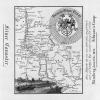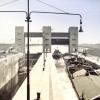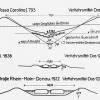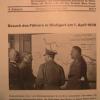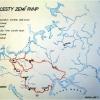Integrating Europe
The EU Strategy for the Danube Region
The collapse of communism in 1989 opened a new chapter in the history of the European waterway network. However, the system of waterway governance was not entirely unprepared.
Since the early 1950s, the United Nations' Economic Commission for Europe (UNECE) had promoted cooperation across the Iron Curtain in a number of ways, including water transport. From the 1960s onward, a group of experts from both socialist and capitalist countries had developed technical standards and political regulations for inland navigation across the continent and helped introduce radar, shipping containers, and push convoys.
Their work eventually led to the European Agreement on Main Inland Waterways of International Importance (AGN), which was signed under the framework of the UNECE in 1996. By then, material unification was already well under way. In 1992, the Rhine-Main–Danube canal, re-named the Europe Canal, finally opened. The new link not only crossed the continental watershed, but also the former political divide.
Since then, the Danube in particular has become the focus of renewed efforts on the part of the European Union to create a multi-modal transport system via the NEWADA project, but also as a means of intergrating former Eastern European countries economically into the West.
 Previous Story
Previous Story
How to cite this page
Jiří Janáč, 'Integrating Europe', Inventing Europe, http://www.inventingeurope.eu/story/integrating-europe
Sources
- Jiří Janáč, European Coasts of Bohemia. Negotiating the Danube-Oder-Elbe Canal in a Troubled Twentieth Century. Amsterdam: Amsterdam University Press, 2012.





